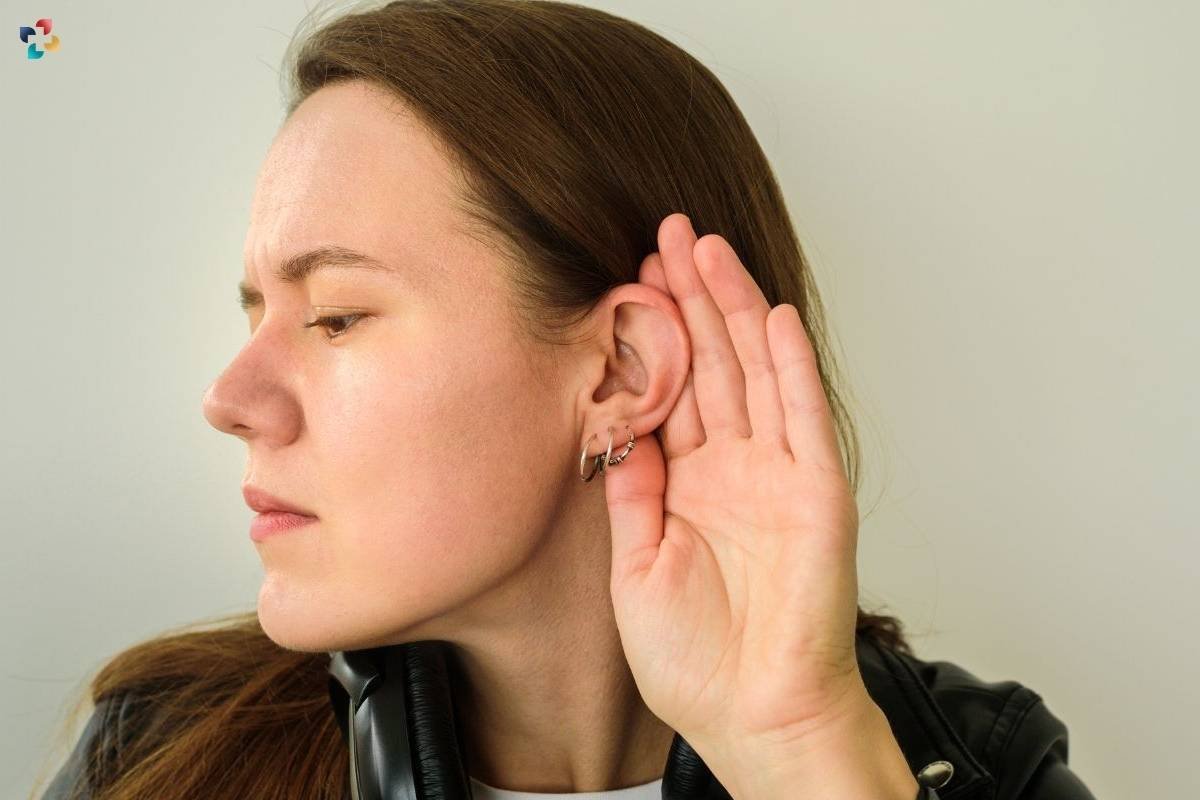Hearing is essential for both communication and general health. Nevertheless, even if the office is a location of productivity, there may be particular risks to hearing health there. In this comprehensive analysis, we examine the several elements that contribute to understanding hearing problems in the workplace, including environmental factors, occupational dangers, and preventive measures that are essential to preserving auditory health.
14 Causes of Hearing Problems in the Workplace:
1. Occupational Noise: A Deafening Concern
One of the primary culprits behind hearing problems at work is exposure to occupational noise. Industries such as manufacturing, construction, and transportation often generate high levels of noise from machinery, equipment, and tools. Prolonged exposure to these loud environments can lead to noise-induced hearing loss (NIHL), a condition that develops gradually but can have irreversible consequences.
2. Understanding Noise-Induced Hearing Loss (NIHL)

NIHL occurs when the delicate hair cells in the inner ear, responsible for transmitting sound signals to the brain, become damaged due to exposure to loud noises. The severity of NIHL depends on the intensity and duration of noise exposure. Workers in industries where noise levels exceed safe limits are particularly vulnerable to this occupational hazard.
3. Regulations and Compliance: The Role of Protective Measures
To address the risks associated with occupational noise, regulatory bodies have established guidelines and standards for permissible noise levels in the workplace. Employers are obligated to implement engineering controls, such as noise barriers and soundproofing, and provide personal protective equipment (PPE), such as earplugs or earmuffs, to mitigate the impact of noise on workers’ hearing health.
4. The Challenge of Compliance and Enforcement
While regulations exist to safeguard workers from excessive noise, challenges in compliance and enforcement persist. In some cases, employers may prioritize productivity over safety, neglecting to implement necessary measures. Additionally, workers may not consistently use provided hearing protection, either due to discomfort or a lack of awareness regarding the long-term consequences of noise exposure.
5. Ototoxic Substances: Silent Contributors to Hearing Issues
Certain workplaces expose employees to ototoxic substances, chemicals that can damage the auditory system. Exposure to substances like solvents, heavy metals, and certain medications can lead to hearing problems. Ototoxicity poses a unique challenge as its effects may not manifest immediately, making it difficult to associate hearing problems in the workplace.
Also Read: 5 Ways to Avoid Migraines in the Workplace
6. Impacts of Ototoxic Substances on Auditory Health
Ototoxic substances can damage the hair cells in the inner ear or disrupt the transmission of signals along the auditory nerve. This damage may result in hearing loss, tinnitus (ringing in the ears), or balance issues. Identifying and minimizing exposure to ototoxic substances is crucial for preventing long-term auditory damage.
7. Work-Related Stress and Hearing Problems
Beyond the physical factors, work-related stress has emerged as a potential contributor to hearing problems. Chronic stress, often experienced in high-pressure work environments, can have physiological effects on the body, including increased muscle tension. This tension can extend to the muscles of the inner ear, impacting their function and potentially leading to auditory symptoms.
8. The Connection Between Stress and Tinnitus
Tinnitus, characterized by a perception of noise in the ears without an external source, has been associated with stress and anxiety. Individuals experiencing work-related stress may be more prone to developing tinnitus, which, in turn, can contribute to difficulties in concentration, sleep disturbances, and a reduced quality of life.
9. Occupational Hearing Health Screening

Regular hearing health screening in the workplace is essential for early detection of potential issues. Employers can implement audiometric testing programs to monitor changes in employees’ hearing over time. Early identification allows for timely intervention and the implementation of preventive measures to preserve auditory health.
10. Preventive Measures and Employee Education
To address and mitigate hearing problems in the workplace, a holistic approach is required. Employee education on the risks of occupational noise, the importance of using protective measures, and the potential consequences of untreated hearing loss can foster a culture of awareness and responsibility. Providing resources for stress management and mental well-being further contributes to overall auditory health.
11. Advancements in Hearing Protection Technology
The landscape of hearing protection technology has evolved to offer more advanced and user-friendly solutions. Intelligent earmuffs with noise-canceling capabilities, custom-molded earplugs, and communication devices that allow workers to stay connected while protecting their hearing are examples of innovations that enhance both safety and communication in noisy environments.
12. The Role of Ergonomics in Auditory Health
Ergonomics, often associated with optimizing physical workspaces, also extends to auditory health. Designing work environments with sound-absorbing materials, acoustic panels, and proper layout considerations can contribute to a quieter and healthier workplace. Creating designated quiet zones can provide respite from continuous noise exposure.
13. Remote Work and Auditory Health Considerations
The rise of remote work, accelerated by global events, introduces new considerations for auditory health. While remote environments may lack the noise hazards of traditional workplaces, employees face potential challenges such as increased reliance on headphones for virtual meetings. Employers need to address these evolving dynamics to ensure the auditory well-being of remote workers.
14. Legal Implications and Workers’ Rights

Employees have the right to a safe and healthy work environment, including protection from hazardous noise levels. Legal frameworks exist to enforce these rights and hold employers accountable for providing adequate safeguards. Workers experiencing hearing problems in the workplace due to workplace conditions may be entitled to compensation, emphasizing the importance of legal protections.
Conclusion:
The intricate interplay of occupational dangers, environmental conditions, and individual health issues can lead to hearing problems in the workplace. In order to establish and preserve an atmosphere at work where auditory health is given priority, employers, regulators, and employees must work together.
Proactive measures, such as strict adherence to noise rules and adoption of technical developments in hearing protection, can protect workers from the potentially irreversible effects of occupationally-related hearing disorders. Workplaces may change to become environments that not only promote productivity but also protect the priceless gift of hearing for each and every person via advocacy, education, and a dedication to well-being.








